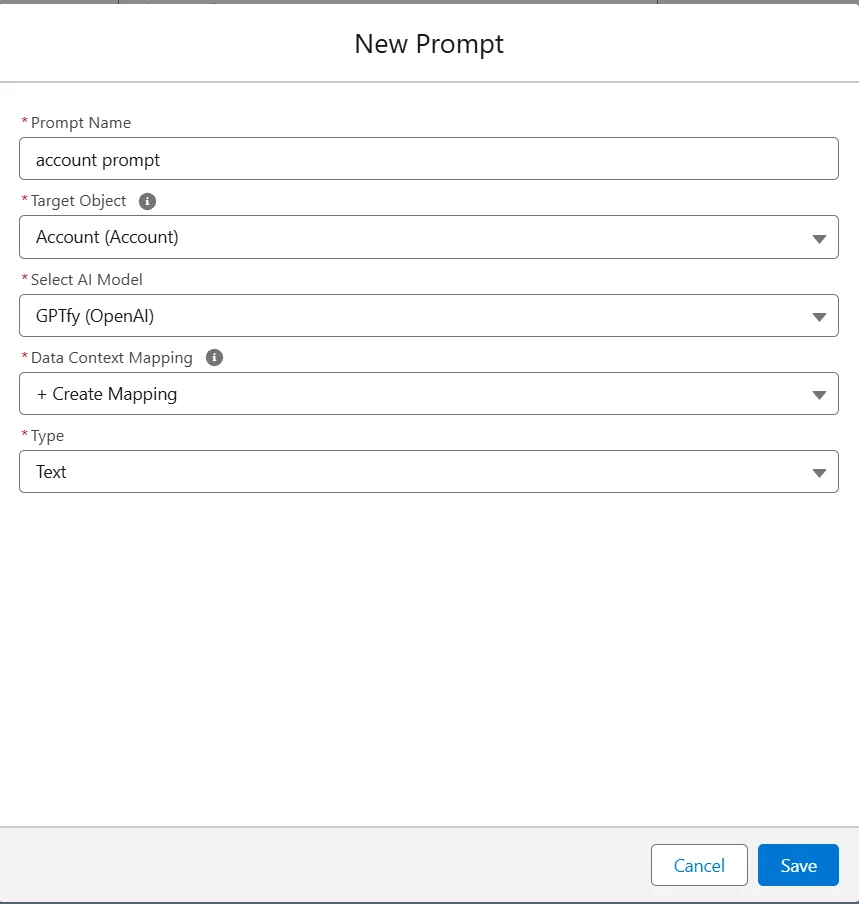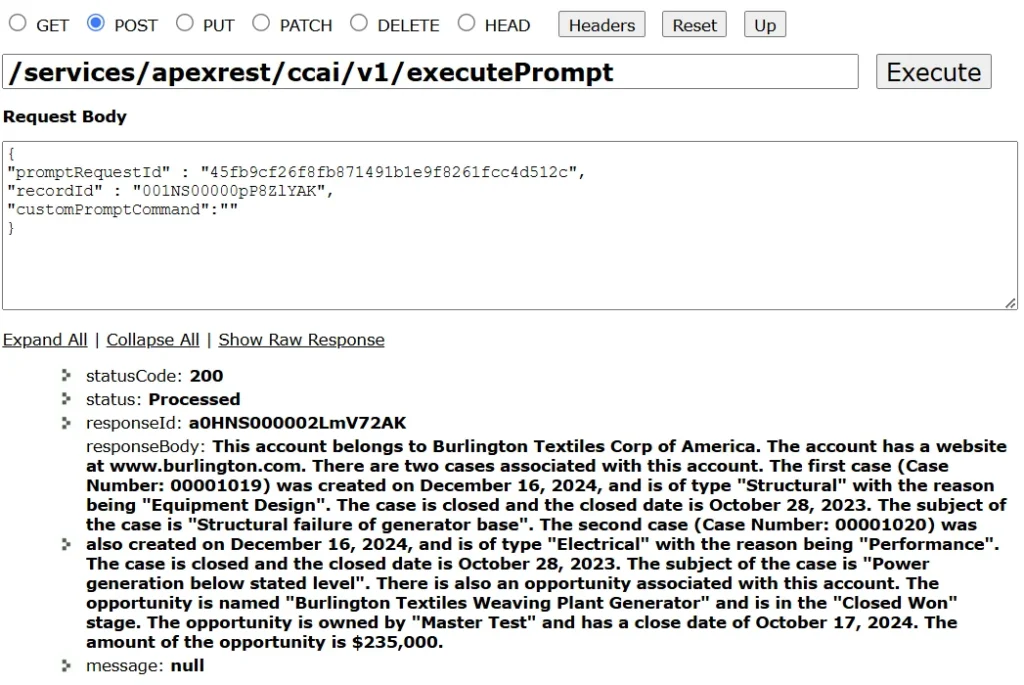This document provides step-by-step instructions on how to configure and invoke GPTfy. The process involves invoking GPTfy through the REST API using a JSON-based callout, specifically targeting a particular record.
The REST APIs that are developed for this requirement are as follows –
POST Request: This is the API that is used to execute GPTfy via REST.
Step 1: Navigate to the Prompt tab of GPTfy
- Click on the “Prompts” tab.
- Click New.
Step 2: Create a New Prompt
- Provide a suitable name for the prompt.
- Select the target object on which the prompt will be invoked.
- Specify the connection details.
- Define the mapping created for the prompt.
- Choose the prompt type (JSON or Text).
- Click on the “Save” button to save the prompt configuration.
- Once the prompt is created, PromptRequestId gets generated.
- Click on Allow user Input checkbox, if we need to give personalised input at time of running.
- Activate the Prompt by clicking on the Activate button.
Step 3: Access a REST Tool for API Invocation
To proceed with the invocation, access any REST tool, such as Salesforce Developer Workbench or Postman. (This example uses Salesforce Developer Workbench.)
Step 4: Use the REST Explorer in Salesforce Developer Workbench
- Within the workbench, navigate to the “Utility” tab and select “REST Explorer.”
- In the REST Explorer, select the “POST” method as we are making a POST request to execute GPTfy via REST.
Step 5: Enter the GPTfy REST Call URL
- In the “POST” method, input the GPTfy REST call URL for the API invocation.
API
/services/apexrest/ccai/v1/executePrompt
Body
{
"promptRequestId" : "bd3329c0bd50918f3d67f87118bbeaf6f4796",
"recordId" : "001GC00003d8c1VYAQ",
"customPromptCommand" : ""
}
Step 6: Prepare the Request Body in JSON Format
- Copy the PromptRequestId and RecordId from the previous prompt creation step.
- Paste the collected data into the appropriate fields within the JSON format of the request body.
- Insert the custom prompt command if any.
Step 7: Execute the REST API
- Click the “Execute” button in the REST Explorer to invoke the GPTfy REST API.
Step 8: Review the API Response
- The REST API will return a Success status code (200) upon successful execution.
- The response will include important details such as status, Success, responseId, and responseBody.






